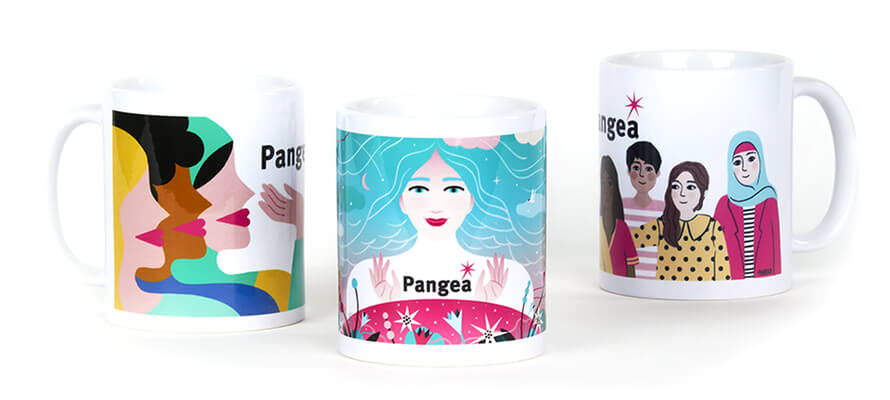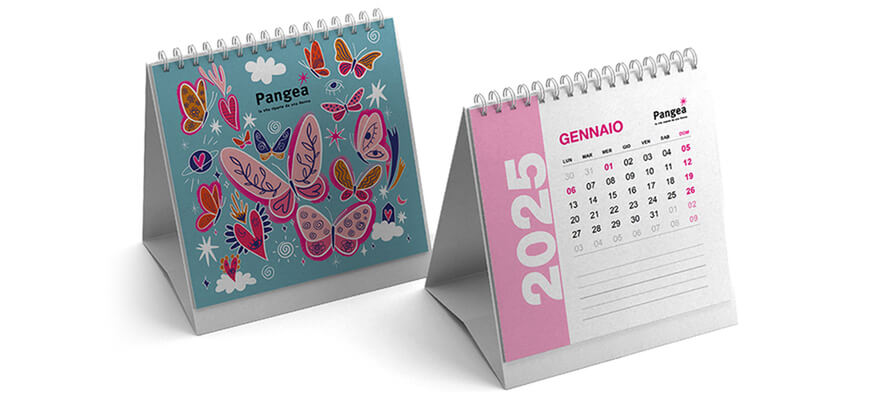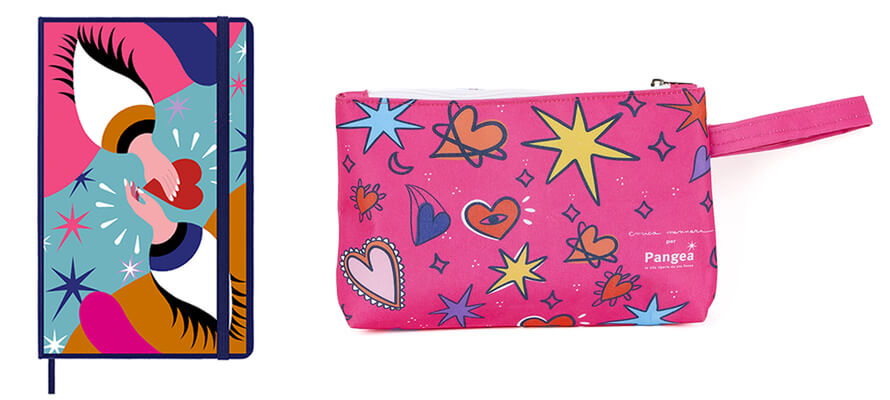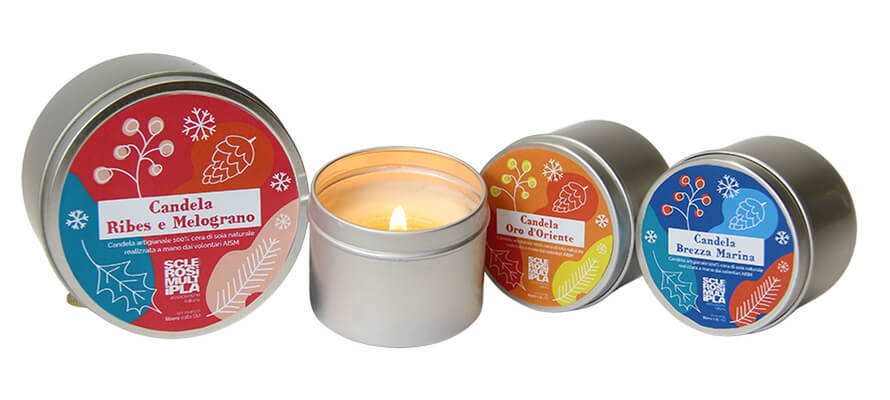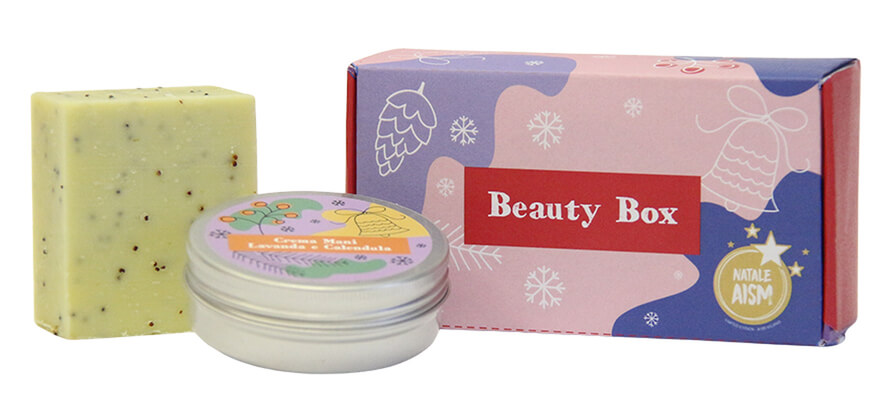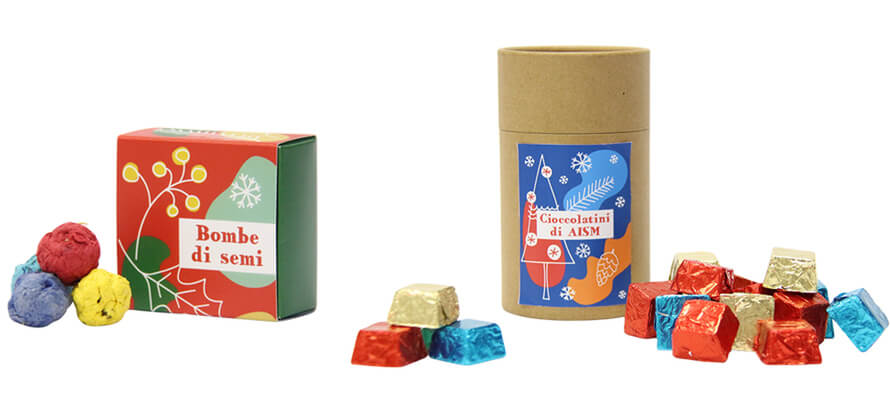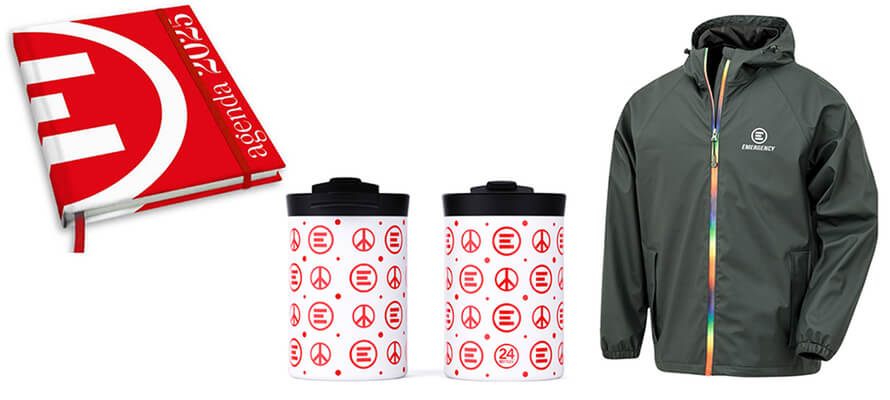Printing and non-profit, when gifts are beautiful and good
Design and print are supporting the social impact of the third sector: promotional gifts for non-profit organisations are increasingly important to raise funds, as well as to reinforce the brand message and build donor loyalty. We talked about this with Marco D'Arminio (AISM Milano), Pierluigi Ciprietti (Emergency) and Silvia Redigolo (Pangea).
By Elena Panciera | On PRINTlovers 104
During the pandemic, many non-profit organisations experienced a drop in donations (54.5% in 2020 and 41% in 2021). So, they have often tried to diversify their fundraising strategies, including or enhancing the sale of solidarity products. However, in the case of the third sector, it is not simply a matter of “selling an object”. Each product represents an opportunity to transmit values, raise awareness among donors, and generate resources crucial for continuing their work.
Behind each item is a meaningful story (or more than one), strategic planning, and careful design. However, as Pierluigi Ciprietti, coordinator of Emergency's commercial office, explains, there is something deeper: “Of course, the main objective is fundraising. But we also want to convey fundamental messages related to our mission. These products help us tell the story of our work while promoting care for people and the environment.”
Packaging and design to build a bond with donors
Careful product design and packaging help to attract and strengthen the bond with its audience. Marco D'Arminio, External Relations Manager of AISM Milano (Italian Multiple Sclerosis Association), says: “The packaging of solidarity products allows us to get a deep and personal message across. For example, at Christmas, we adopt a graphic line for our products that is coordinated and consistent with the association's colours, from the catalogue to e-commerce. This is reflected in an increase in donations. We realised that neat packaging, which tells the story behind the product, really makes a difference in communication, awareness and, ultimately, fundraising.”
Pangea also invests heavily in design, selecting suppliers who collaborate with ethics and care for every detail, from packaging to the choice of raw materials. Silvia Redigolo, Communication and Fundraising Manager, tells of the special relationship Pangea has created with illustrator Enrica Mannari. The collaboration has turned into a friendship: “Mannari develops a new colour palette every year to renew the image of the products while remaining faithful to Pangea's values and craftsmanship. Everything we propose to our public must be beautiful and of quality.” In recent years, the collaboration has extended to other illustrators, such as Antonio Colomboni (Scombinanto), Paola Colombo (Pollaz) and Federica Bordoni.
Emergency adopts a hybrid approach, working with an in-house graphics department and involving external figures on special occasions, as Pierluigi Ciprietti explains: “For our 30th anniversary, we asked illustrators to interpret their idea of Emergency visually, based also on our logo. That’s how the Artivists for Emergency project came about: Francesco Bongiorni, Gianluca Costantini, Camilla Falsini, Fumettibrutti, Olga Grebennik, Laika, Lillo, Fabio Magnasciutti, Irene Rinaldi, Dario Sansone, Davide Toffolo.”
Sustainable choices and ethical supply chains
For many third-sector organisations, environmental sustainability and social impact are crucial in addition to aesthetics. Emergency, for example, selects recycled materials for its articles and minimises the use of packaging. “We select suppliers who guarantee us as little packaging as possible. For example, many of our t-shirts are sold without plastic bags to reduce waste,” Ciprietti points out. Pangea also adopts strict criteria: “The printers we collaborate with respect sustainability criteria, use recycled paper and renewable energy sources such as solar panels,” explains Redigolo.
This attention to sustainability is also reflected in the collaborations with small local organisations, such as the social cooperative producing AISM's Baci di dama (speciality biscuits), which contributes to the re-employment of people in prison; the social cooperative VAGAMONDI, which offers products for Emergency; or family-run companies such as Mieli Thun or Coricelli, which collaborates with Pangea.
With all these organisations, the relationship often transcends the simple professional supply of products: “They collaborate with us because they understand and share our mission,” explains Emergency's Ciprietti. Redigolo says, "Whoever supplies a product to Pangea becomes its partner and is aware that they are concretely contributing to improving women's lives. The selection of suppliers results from meetings and the search for companies that respect ethical values and have a significant history”.
Different fundraising strategies, one goal
The three organisations adopt different approaches to margins and profit strategies. Emergency, for example, maintains a well-defined commercial structure, treating its solidarity products as sales items in their own right. There are no “minimum donations” but accurate sales prices for greater transparency towards the public. Ciprietti says, “Margins vary according to the product type, but we work with a commercial mentality because Emergency wants to be present as a recognisable and sustainable brand.”
At AISM, on the other hand, fundraising with solidarity products must maintain a margin of between 50 and 60 per cent of the sales price, taking into account production and packaging costs. This allows a good portion of the proceeds to be allocated to support services and multiple sclerosis research. “Our aim is always to maximise profit without excessive luxury, which would not reflect our values nor those of the donor,” explains D'Arminio.
Pangea uses a similar criterion, ensuring that at least 70 per cent of revenues go directly to support its projects. For Redigolo, whoever offers a product to Pangea is not just a partner but part of the ethical system that Pangea represents. “Our honey and oil, for example, are the result of collaborations based on friendship and common commitment,” he says, citing collaborations with Francesca and Elena Paternoster of Mieli Thun and Chiara Coricelli of Coricelli.
Building authentic relationships with your audience
The feedback from the public is always positive and goes beyond mere satisfaction with the product. People who buy from Emergency are customers in their own right: they follow the organisation, buy throughout the year and appreciate innovation, such as the series of T-shirts made for the association's thirtieth anniversary. The design of the products stimulates curiosity and keeps the relationship with the organisation alive.
Pangea prefers to talk about donors rather than customers, as those who choose a Pangea product know they are supporting a social change project, such as women victims of violence. Christmas products, in particular, are very popular: “Offering quality products that can be given as gifts with pride is essential”.
The power of design and branding for fundraising
A common lesson emerges from the experiences of Emergency, AISM, and Pangea: print, design, and branding are not just tools for selling solidarity products but powerful communication vehicles that can amplify the value of the cause supported. Choosing sustainable materials, maintaining a consistent layout, and telling authentic stories create a deeper connection with the audience.
In an era when social causes multiply, and resources are limited, an integrated, ethical, and visually curated fundraising strategy can make a difference, building a long-term movement of support and solidarity.
Takes a comprehensive perspective on all aspects of multiple sclerosis (MS): rights of people with MS, health and social care services, and scientific research.
Emergency
Provides free, high-quality medical and surgical care to victims of war, landmines and poverty. It promotes a culture of peace, solidarity and respect for human rights.
Pangea
Promotes the economic and social redemption of women with development and cooperation projects. Works in contexts characterised by discrimination, poverty, marginalisation, and wars.
“Noi doniamo” (we donate): a stable third sector again
According to the 7th edition of the annual report “Noi doniamo”, edited by the Italian Institute for Donation, 2023 showed a slight recovery in donations compared to the drops due to the pandemic. According to ISTAT, 11% of people in Italy said they had donated money at least once, a slight drop from 12.8% in 2022. However, “informal donations” (i.e., those not going through non-profit organisations) have increased. Donations come mainly from people aged between 45 and 74, and there is a marked difference between the north and south of the country. Those who donate are often women, university graduates and in management positions. The most supported causes are medical-scientific research and emergency aid, followed by support for poverty in Italy. According to the Observatory on Giving, donations through third-sector organisations have remained stable but without significant growth. The primary funding source comes from donations from private individuals, followed by the 5x1000 (donation in tax declaration). Organisations also benefit from collaboration with testimonials and influencers, which can broaden the audience of donors, especially among younger people. The survey results for associations show substantial stability in the variation of fundraising: 32% record an increase (compared to 47% in 2022), 21% a decrease (25% in 2022) and for as many as 47% the situation remains unchanged (compared to 28% in 2022). The largest source of income in 2023 is also charitable donations from individuals (60%), followed by an increasing significance of the 5x1000, which reaches 39% (compared to 31% in 2022). Donations in wills continue to be marginal (1%).
The “Ferragni Bill” - towards greater transparency
The case of Chiara Ferragni's branded Balocco pandoroons has focused attention on transparency and fundraising rules. At the beginning of 2024, the so-called Ferragni Bill was approved, which also impacted the third sector. It sets out rules for transparent communication on the destination of money from the sale of promotional items for charitable, cause-related purposes. This includes the obligation to clearly label products, specifying who benefits and how much goes to charity. Also for this reason, in the Noi doniamo 2024 report, Caritas Italiana reports how third-sector organisations are increasingly careful to verify the transparency of partnerships with brands and companies for cause-related marketing initiatives. They verify their ethical alignment and the impact of promotional campaigns through solidarity items. There is also an increased focus on donor reputation, trust, and risk mitigation policies.
